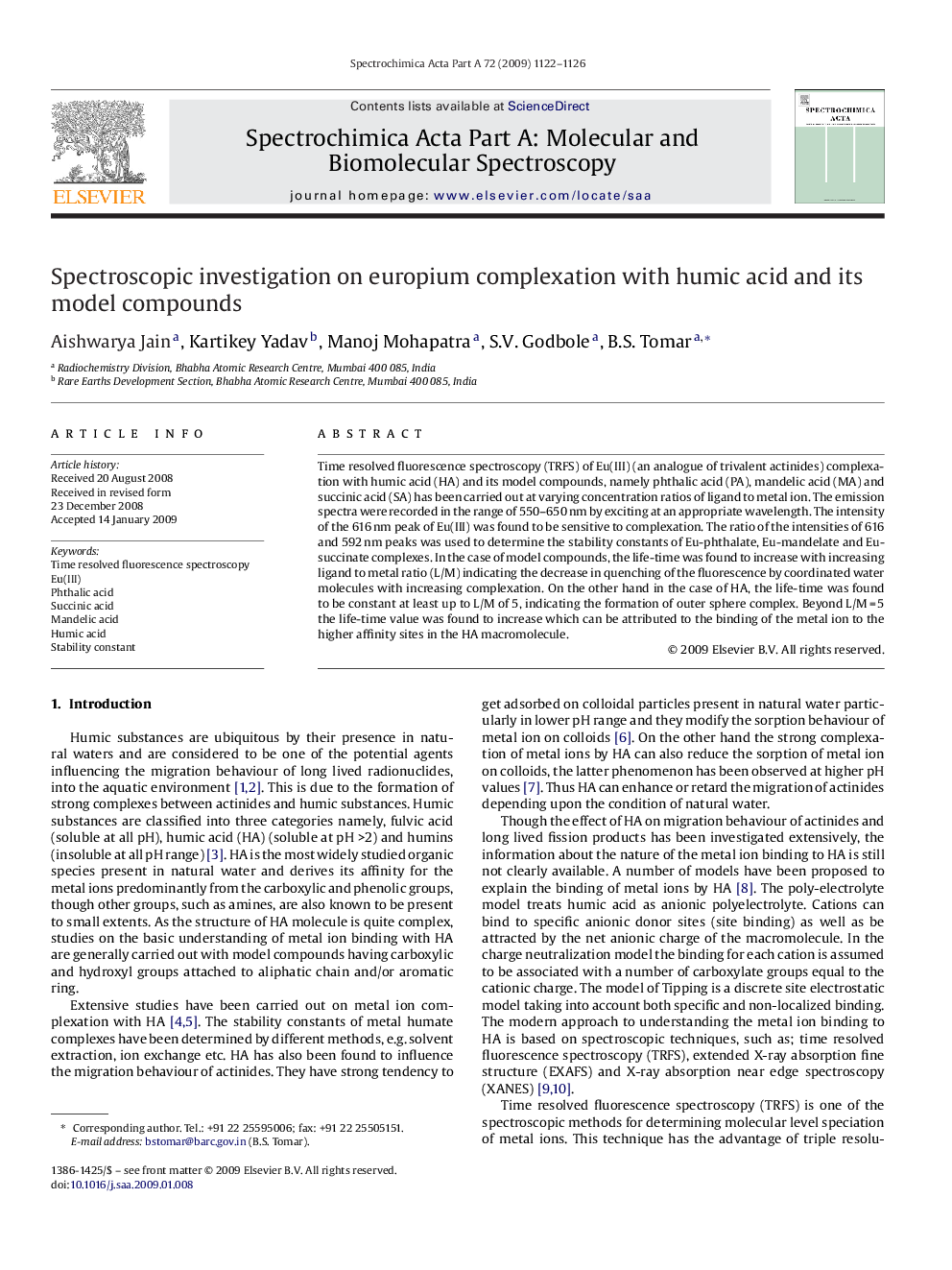| Article ID | Journal | Published Year | Pages | File Type |
|---|---|---|---|---|
| 1237104 | Spectrochimica Acta Part A: Molecular and Biomolecular Spectroscopy | 2009 | 5 Pages |
Abstract
Time resolved fluorescence spectroscopy (TRFS) of Eu(III) (an analogue of trivalent actinides) complexation with humic acid (HA) and its model compounds, namely phthalic acid (PA), mandelic acid (MA) and succinic acid (SA) has been carried out at varying concentration ratios of ligand to metal ion. The emission spectra were recorded in the range of 550-650Â nm by exciting at an appropriate wavelength. The intensity of the 616Â nm peak of Eu(III) was found to be sensitive to complexation. The ratio of the intensities of 616 and 592Â nm peaks was used to determine the stability constants of Eu-phthalate, Eu-mandelate and Eu-succinate complexes. In the case of model compounds, the life-time was found to increase with increasing ligand to metal ratio (L/M) indicating the decrease in quenching of the fluorescence by coordinated water molecules with increasing complexation. On the other hand in the case of HA, the life-time was found to be constant at least up to L/M of 5, indicating the formation of outer sphere complex. Beyond L/MÂ =Â 5 the life-time value was found to increase which can be attributed to the binding of the metal ion to the higher affinity sites in the HA macromolecule.
Keywords
Related Topics
Physical Sciences and Engineering
Chemistry
Analytical Chemistry
Authors
Aishwarya Jain, Kartikey Yadav, Manoj Mohapatra, S.V. Godbole, B.S. Tomar,
